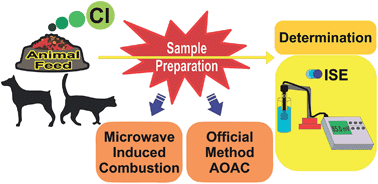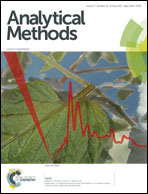A new method for chlorine determination in commercial pet food after decomposition by microwave-induced combustion
Abstract
In this work, the feasibility of a new sample preparation method was demonstrated for commercial pet food digestion for the determination of chlorine by ion selective electrode (ISE). Pet food decomposition was performed by microwave-induced combustion (MIC) and up to 600 mg of sample was combusted in closed vessels using 20 bar of O2. Solutions of (NH4)2CO3 or ultrapure water were evaluated as absorbing mediums. Using the selected conditions, Cl recovery was higher than 96% and the relative standard deviation (RSD) was lower than 6%. Accuracy was evaluated using two certified reference materials with agreement better than 95%. Chlorine was also determined in digests by ion chromatography and results were in agreement better than 97%. For comparison of results, samples were also digested using the method recommended by Association of Official Analytical Chemists (AOAC) and results for Cl were in agreement with those obtained by the proposed method; however, the RSD was up to 16%. The limit of detection (LOD) for Cl by MIC and subsequent determination by ISE was 90 µg g−1, whereas the LOD for Cl by AOAC method was 3480 µg g−1. MIC allowed the digestion of commercial pet food samples with high efficiency (>98%) and was suitable for further Cl determination by ISE.


 Please wait while we load your content...
Please wait while we load your content...